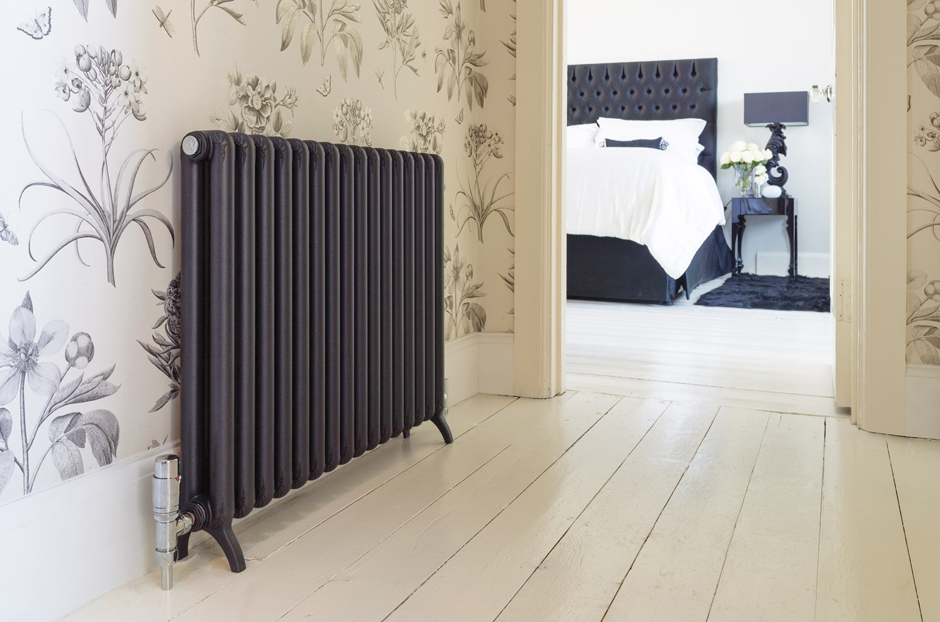Your guide - heating your home
Share
Copy Link
A home renovation is an ideal time to replace your old heating system and upgrade it to become more efficient and effective. Here is our handy guide on heating your home.
New radiators
Replacing your old radiators will make your heating system work more efficiently if your existing ones are old, and will also smarten up your room. A renovation also gives you a great opportunity to move the position of your radiators, which is relatively straight forward for your builder to do.
When you are choosing your new radiator, consider the following:
Calculate the correct BTU output
It's so important to get the heat output correct for the size of your room. Most radiator retailers have BTU calculators which will confirm the wattage you need for the space. It's not hard to do and won't take much time but it's so important you get this right. Don't just consider the width and height of the radiator but also the number of panels to allow for maximum heat output.
Install thermostat valves
Radiator valves are inexpensive but worth adding to your radiator as they will control the temperature in each room, making your central heating more efficient. You can get either manual valves where you need to change them in each room manually to your desired temperature, or an electronic thermostat which can be linked up to an intelligent heating system and can therefore be controlled by the touch of a button on your smart phone.
Radiator materials
There are a huge range of radiators in the market. The most popular (and cheapest) are still the steel white radiators, however also growing in popularity are aluminium designer radiators, traditional cast iron radiators and towel radiators for your bathroom.
Aluminium heats up and cools down quickly, compared to cast iron which can take time to heat up but will hold the heat for much longer. There are so many great designs now, have a good look to see what suits your home the best.
You do not have to change your radiators when you replace your heating system but new radiators will likely be more efficient and look smarter too. Expect to pay around £100 for a medium size central heating radiator and anything from £350 for a cast iron.

Stunning Tetro radiator by Bisque Radiators
Underfloor heating
Underfloor heating is a great option and can be included in either an extension or a full renovation. Underfloor heating is particularly effective in bathrooms and kitchens and gives a real feeling of luxury underfoot. There are two types of underfloor heating - electric and wet.
Electric underfloor heating
Electric underfloor heating is simply a reel of heat emitting cable laid under a finished floor. Electricity conducted through the cable generates heat which in turn indirectly heats the floor.
Wet underfloor heating
Wet underfloor heating consists of an arrangement of water pipes laid in loops under a floor. Water heated by a gas, oil or a renewable heat source is then pumped through the pipe loops, which in turn indirectly heats the floor.
Wet underfloor heating is much less expensive in terms of running costs, more reliable in the long term, but is also a higher capital spend. Given that the system will be operational for many years, the total ownership costs would always be best utilising a wet underfloor heating over an electric system.
Expect to pay £80 - £100 + VAT per metre squared for a small installation, however the costs will reduce over a larger area. Underfloor heating is normally cheaper to run than radiators so it should work out cost effective in the long run.
If you are considering underfloor heating, check out our article expert advice - underfloor heating.

Underfloor heating installation
Installing a stove
We adore a glowing stove and a renovation is a great time to add one in your home. Not only do they look stylish but also produce a high heat output, so they can really heat a large space without having to turn on any other heating.
Stoves range in output from 3kW to 15kW and the size you choose depends on things such as the size of your room and the age of the property. There are also building regulations that stipulate that the stove must be 450mm away from combustible materials, as well as individual manufacturers guides that stipulate the air gap around the stove. Always check with the stove manufacturer before installing one as the guidelines vary between manufacturers
Expect to pay between £500 - £5,000 for a good stove.

The classic Clearview 400 woodburner stove
Replacing your new boiler
If you have an old boiler, renovating your property is a great time to replace it while you have a lot of mess going on. A new boiler is never an appealing way to spend money however consider the energy savings as well as having a reliable system in the winter.
When you are stripping back your property during a renovation, it's a great time to consider the best place in your home for the boiler and water tanks and whether there is a better place to move them to. If the boiler is currently in the kitchen area, consider moving it to a cupboard or garage to free up space in your living area.
You will also need to consider whether you need a combi or conventional boiler, typically conventional boilers are the choice if you have more than one bathroom in use and live in a busy home, otherwise a combi boiler should work for a smaller home. For more advice on whether to choose a combi or conventional boiler, check out our article expert advice - boilers.
The cost of a new boiler varies greatly depending on whether you are moving the location and need additional piping or whether your new system requires wider pipes to cope with the increased gas pressure. Expect to pay around £2,000 for a straightforward boiler swap, although this may vary depending on where you are living in the UK.

Published: September 6, 2018



